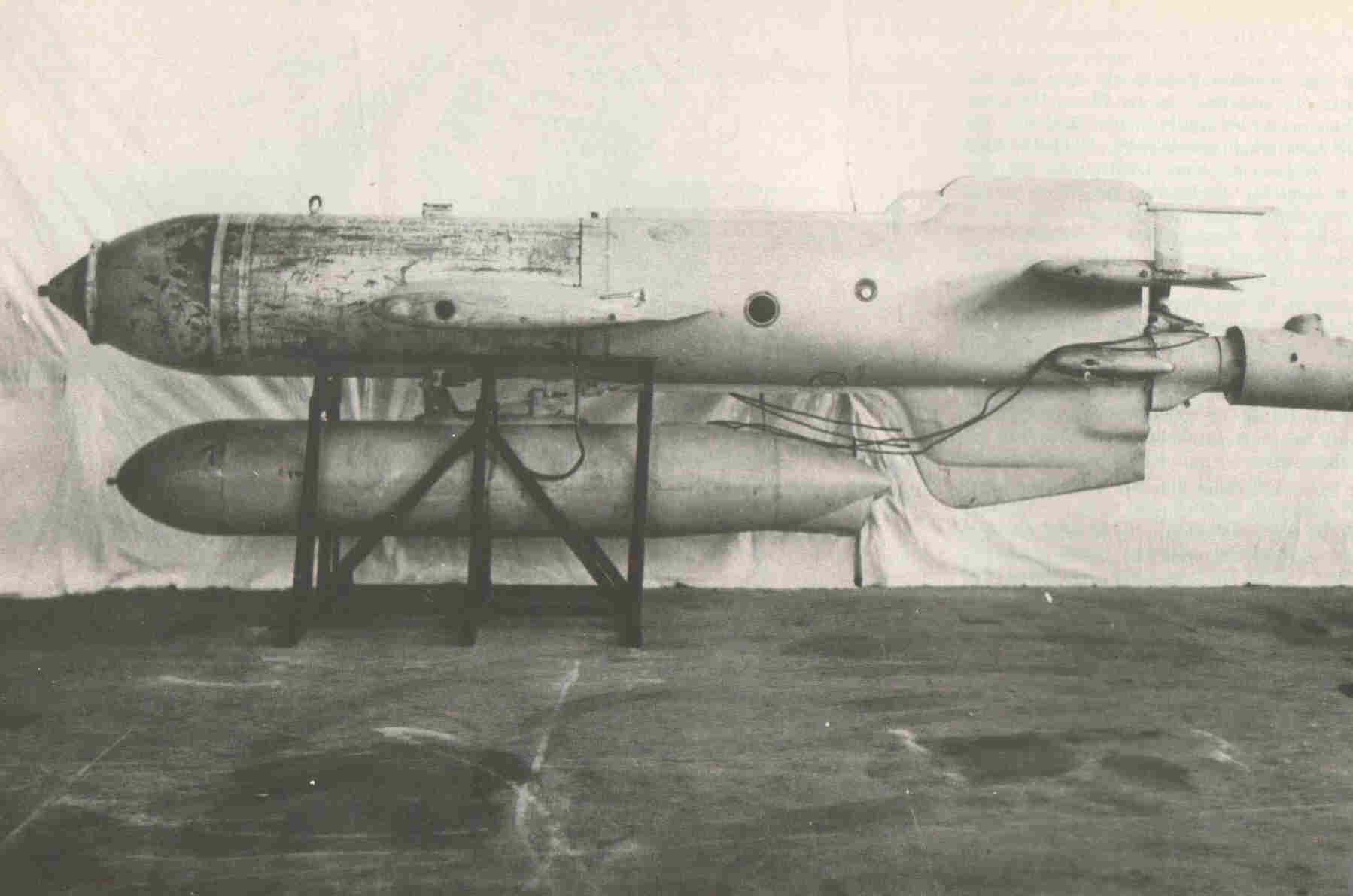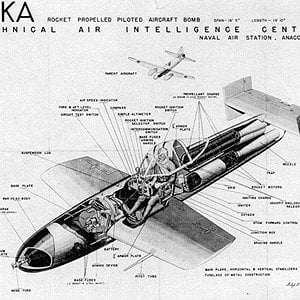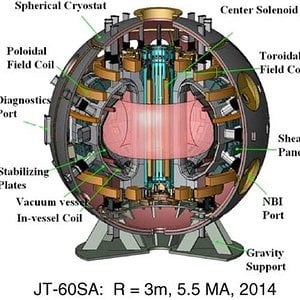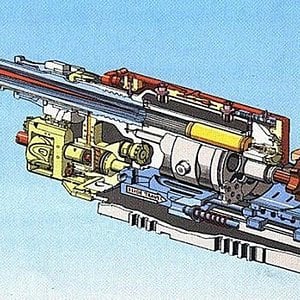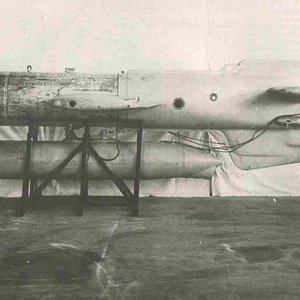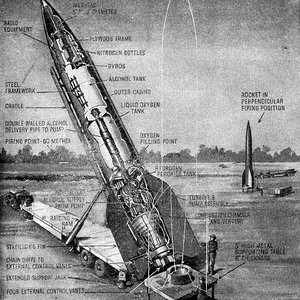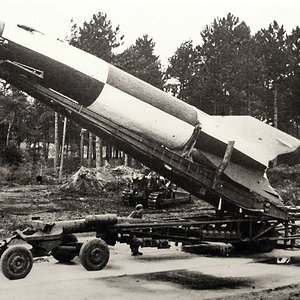Navigation
Install the app
How to install the app on iOS
Follow along with the video below to see how to install our site as a web app on your home screen.
Note: This feature may not be available in some browsers.
More options
You are using an out of date browser. It may not display this or other websites correctly.
You should upgrade or use an alternative browser.
You should upgrade or use an alternative browser.
History
The Hs 293 project was started in 1940, based on the "Gustav Schwartz Propellerwerke" pure glide bomb that was designed in 1939. The Schwartz design did not have a terminal guidance system - it used an autopilot to maintain a straight course. The intention was that it could be launched from a bomber at sufficient distance to be out of range of anti-aircraft fire. Henschel developed it the following year by adding an HWK 109-507 rocket motor underneath it, possessing a 600 kg (1,320 lb.) thrust of ten second duration, to allow it to be used from lower altitude and to increase the range.
The first flight attempts took place between May and September 1940, with unpowered drops from Heinkel He 111 medium bombers used as carrier aircraft, with the first Walter rocket motor-powered tests occurring by the end of 1940.
The weapon consisted of a modified standard 500 kg bomb called SZ, with a thin metal shell and a high explosive charge inside, equipped with a rocket engine under the bomb, a pair of wings, and an 18-frequency-capability Strassburg radio receiver, named for the 1st century BCE-founded city on the French/German border, getting its signals from a Kehl transmitting set (named for a German suburb of the two-millennia-old city) in the carrier aircraft. Only the elevator, operated with an electrically powered jackscrew as the only proportional control, with the ailerons operated with solenoids provided flight control through the Kehl-Strassburg radio link, with the Hs 293's control setup having no movable rudder on the ventral tailfin. The rocket provided for only a short burst of speed making range dependent on the height of launch. From a height of 1400 meters the Hs 293 had a range of about 12 km.
The Hs 293 was intended to destroy unarmoured ships, unlike the Fritz X that was intended for use against armoured ships. The operator controlled the radio-guided missile with the Kehl transmitter's joystick. Five colored flares were attached to the rear of the weapon to make it visible at a distance to the operator. During nighttime operations flashing lights instead of flares were used.[1]
One drawback of the Hs 293 was that after the missile was launched the bomber had to fly in a straight and level path at a set altitude and speed parallel to the target so as to be able to maintain a slant line of sight and could thus not manoeuvre to evade attacking fighters without aborting the attack.[2]
The Allies also went to considerable effort to develop devices which jammed the low-VHF band (48.2 MHz to 49.9 MHz) radio link between the Kehl transmitter aboard the launching aircraft and the Strassburg receiver embedded in the missile. Early jamming efforts by the United States Naval Research Laboratory (NRL) produced the XCJ jamming transmitter installed aboard the destroyer escorts USS Herbert C. Jones and Frederick C. Davis in late September 1943. The XCJ was ineffective because the frequencies selected for jamming were incorrect. This was updated in time for Operation Shingle at Anzio (Italy) with the XCJ-1 system, installed aboard the two destroyer escorts mentioned above as well as the destroyers USS Woolsey, Madison, Hilary P. Jones and Lansdale. These six ships rotated service at Anzio, with three deployed at any time. This system met with some success, though because of its manual interface, it was cumbersome to use and easily overwhelmed if large numbers of missiles were engaged. On balance, the probability that a Hs 293 launched (and seen as responding to operator guidance) would actually strike a target (or achieve a damage-inflicting near miss) was about the same at Anzio as it was during Operation Avalanche at Salerno, Italy.
Meanwhile, as attacks were taking place at Anzio, the United Kingdom began to deploy its Type 650 transmitter which employed a different approach. This system jammed the Strassburg receiver's intermediate frequency of 3 MHz, and appears to have been quite successful, especially as the operator did not have to attempt to find which of the 18 Kehl/Strassburg command frequencies were in use and then manually tune the jamming transmitter to one of those frequences. This system automatically defeated the receiver regardless of which radio frequency had been selected for an individual Luftwaffe missile.
Following several intelligence coups, including a capture of an intact Hs 293 at Anzio and recovery of important components of the Kehl transmitter from a crashed Heinkel He 177 on Corsica, the Allies were able to develop far more effective countermeasures, all in time for the Invasion of Normandy (starting with Operation Neptune, D-Day) and Operation Dragoon in Southern France. This included an updated XCJ-2 system from the Naval Research Laboratory (produced as the TX), the modified airborne AN/ARQ-8 Dinamate system from Harvard's Radio Research Laboratory, NRL's improved XCJ-3 model (produced as the CXGE), the British Type 651 and the Canadian Naval Jammer. Perhaps most impressive of all was AIL's Type MAS jammer which employed sophisticated signals to defeat the Kehl transmission and to take over command of the Hs 293, steering it into the sea via a sequence of right-turn commands. Even more sophisticated jammers from NRL, designated XCK (to be produced as TY and designated TEA when combined with the upgraded XCJ-4) and XCL, were under development but were never deployed as the threat had evaporated before they could be put into service. In contrast to the experience at Anzio, the jammers seemed to have had a major impact on operations after April 1944, with significant degradation observed in the probability that a Hs 293 launched at a target (and responding to operator guidance) would achieve a hit or damage-causing near miss.[3]
To improve the control of the weapon and reduce vulnerability of the launching aircraft a television-guided variant (Hs 293D) was planned but was not made operational before the war ended.
Over 1,000 were built, from 1942 onwards.
Variants
Hs 293A (later Hs 293A-1), the original version.
Hs 293B was wire-guided to prevent jamming; it was never put into production, because jamming was never serious enough to prevent the radio-guided version from being effective.
Hs 293C (production version designated Hs 293A-2) had a detachable warhead.
Hs 293D was television-guided. Twenty were built and tested, but it was never used operationally as the television equipment was unreliable.
Hs 293E, an experimental model to test spoiler controls as a replacement to ailerons; never put into series production. This modification was put into the final version of the Hs 293A-2 but by then the Luftwaffe had no aircraft available for anti-shipping operations and it was never deployed.
Hs 293F, a tailless variant; never got further than the design phase.
Hs 293H, an experimental variant designed to be launched from one aircraft and controlled from another. Abandoned because allied air superiority had reached the point where it was felt that the second aircraft would be unable to remain in the vicinity of the ship for long enough.
Hs 293 V6, the sixth prototype airframe of the entire Hs 293 series, designed for launching from the Arado Ar 234 jet bomber at 720 km/h. The main change was reducing the wing span of the missile to allow it to be carried within the aircraft. The missile did not proceed past the design stage.
The Hs 293 project was started in 1940, based on the "Gustav Schwartz Propellerwerke" pure glide bomb that was designed in 1939. The Schwartz design did not have a terminal guidance system - it used an autopilot to maintain a straight course. The intention was that it could be launched from a bomber at sufficient distance to be out of range of anti-aircraft fire. Henschel developed it the following year by adding an HWK 109-507 rocket motor underneath it, possessing a 600 kg (1,320 lb.) thrust of ten second duration, to allow it to be used from lower altitude and to increase the range.
The first flight attempts took place between May and September 1940, with unpowered drops from Heinkel He 111 medium bombers used as carrier aircraft, with the first Walter rocket motor-powered tests occurring by the end of 1940.
The weapon consisted of a modified standard 500 kg bomb called SZ, with a thin metal shell and a high explosive charge inside, equipped with a rocket engine under the bomb, a pair of wings, and an 18-frequency-capability Strassburg radio receiver, named for the 1st century BCE-founded city on the French/German border, getting its signals from a Kehl transmitting set (named for a German suburb of the two-millennia-old city) in the carrier aircraft. Only the elevator, operated with an electrically powered jackscrew as the only proportional control, with the ailerons operated with solenoids provided flight control through the Kehl-Strassburg radio link, with the Hs 293's control setup having no movable rudder on the ventral tailfin. The rocket provided for only a short burst of speed making range dependent on the height of launch. From a height of 1400 meters the Hs 293 had a range of about 12 km.
The Hs 293 was intended to destroy unarmoured ships, unlike the Fritz X that was intended for use against armoured ships. The operator controlled the radio-guided missile with the Kehl transmitter's joystick. Five colored flares were attached to the rear of the weapon to make it visible at a distance to the operator. During nighttime operations flashing lights instead of flares were used.[1]
One drawback of the Hs 293 was that after the missile was launched the bomber had to fly in a straight and level path at a set altitude and speed parallel to the target so as to be able to maintain a slant line of sight and could thus not manoeuvre to evade attacking fighters without aborting the attack.[2]
The Allies also went to considerable effort to develop devices which jammed the low-VHF band (48.2 MHz to 49.9 MHz) radio link between the Kehl transmitter aboard the launching aircraft and the Strassburg receiver embedded in the missile. Early jamming efforts by the United States Naval Research Laboratory (NRL) produced the XCJ jamming transmitter installed aboard the destroyer escorts USS Herbert C. Jones and Frederick C. Davis in late September 1943. The XCJ was ineffective because the frequencies selected for jamming were incorrect. This was updated in time for Operation Shingle at Anzio (Italy) with the XCJ-1 system, installed aboard the two destroyer escorts mentioned above as well as the destroyers USS Woolsey, Madison, Hilary P. Jones and Lansdale. These six ships rotated service at Anzio, with three deployed at any time. This system met with some success, though because of its manual interface, it was cumbersome to use and easily overwhelmed if large numbers of missiles were engaged. On balance, the probability that a Hs 293 launched (and seen as responding to operator guidance) would actually strike a target (or achieve a damage-inflicting near miss) was about the same at Anzio as it was during Operation Avalanche at Salerno, Italy.
Meanwhile, as attacks were taking place at Anzio, the United Kingdom began to deploy its Type 650 transmitter which employed a different approach. This system jammed the Strassburg receiver's intermediate frequency of 3 MHz, and appears to have been quite successful, especially as the operator did not have to attempt to find which of the 18 Kehl/Strassburg command frequencies were in use and then manually tune the jamming transmitter to one of those frequences. This system automatically defeated the receiver regardless of which radio frequency had been selected for an individual Luftwaffe missile.
Following several intelligence coups, including a capture of an intact Hs 293 at Anzio and recovery of important components of the Kehl transmitter from a crashed Heinkel He 177 on Corsica, the Allies were able to develop far more effective countermeasures, all in time for the Invasion of Normandy (starting with Operation Neptune, D-Day) and Operation Dragoon in Southern France. This included an updated XCJ-2 system from the Naval Research Laboratory (produced as the TX), the modified airborne AN/ARQ-8 Dinamate system from Harvard's Radio Research Laboratory, NRL's improved XCJ-3 model (produced as the CXGE), the British Type 651 and the Canadian Naval Jammer. Perhaps most impressive of all was AIL's Type MAS jammer which employed sophisticated signals to defeat the Kehl transmission and to take over command of the Hs 293, steering it into the sea via a sequence of right-turn commands. Even more sophisticated jammers from NRL, designated XCK (to be produced as TY and designated TEA when combined with the upgraded XCJ-4) and XCL, were under development but were never deployed as the threat had evaporated before they could be put into service. In contrast to the experience at Anzio, the jammers seemed to have had a major impact on operations after April 1944, with significant degradation observed in the probability that a Hs 293 launched at a target (and responding to operator guidance) would achieve a hit or damage-causing near miss.[3]
To improve the control of the weapon and reduce vulnerability of the launching aircraft a television-guided variant (Hs 293D) was planned but was not made operational before the war ended.
Over 1,000 were built, from 1942 onwards.
Variants
Hs 293A (later Hs 293A-1), the original version.
Hs 293B was wire-guided to prevent jamming; it was never put into production, because jamming was never serious enough to prevent the radio-guided version from being effective.
Hs 293C (production version designated Hs 293A-2) had a detachable warhead.
Hs 293D was television-guided. Twenty were built and tested, but it was never used operationally as the television equipment was unreliable.
Hs 293E, an experimental model to test spoiler controls as a replacement to ailerons; never put into series production. This modification was put into the final version of the Hs 293A-2 but by then the Luftwaffe had no aircraft available for anti-shipping operations and it was never deployed.
Hs 293F, a tailless variant; never got further than the design phase.
Hs 293H, an experimental variant designed to be launched from one aircraft and controlled from another. Abandoned because allied air superiority had reached the point where it was felt that the second aircraft would be unable to remain in the vicinity of the ship for long enough.
Hs 293 V6, the sixth prototype airframe of the entire Hs 293 series, designed for launching from the Arado Ar 234 jet bomber at 720 km/h. The main change was reducing the wing span of the missile to allow it to be carried within the aircraft. The missile did not proceed past the design stage.

